Light-Emitting Diodes: What Does LED Stand For? An Overview
Table of Contents
The introduction of LEDs has revolutionized the illumination of our homes, offices, and public spaces. Offering brighter, longer-lasting, and more sustainable options, these small yet impressive devices have significantly evolved. They are a fitting replacement for traditional incandescent bulbs and fluorescent tubes, from the minuscule LEDs illuminating our smartphones to the colossal LED screens that dazzle us in Times Square.
This exhaustive guide will delve into all aspects of LEDs. You’ll discover what does LED stand for, their history, how they work, their applications, and their advantages. So, buckle up for an enlightening journey, whether you’re an engineer, lighting designer, or just a curious consumer!
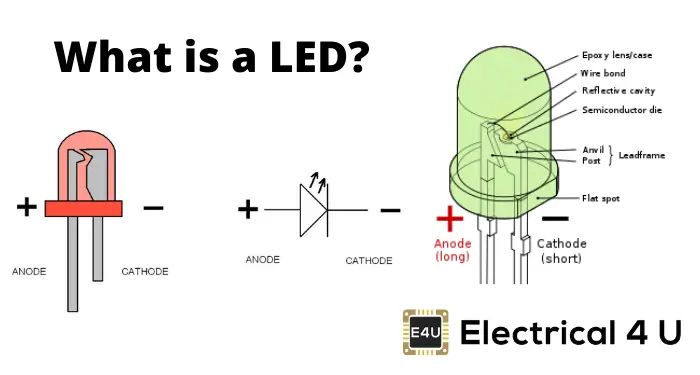
What Does LED Stand For? Light-Emitting Diodes (LEDs)
LEDs are compact semiconductors that emit light when an electric current passes through them. This contrasts with conventional incandescent bulbs that generate light by heating a wire filament. LEDs generate light through the movement of electrons within a semiconductor material.
Available in a range of colors from red and green to blue and white, LEDs boast several benefits over traditional lighting solutions. These include energy efficiency, extended lifespan, and compact size. As a result, they’ve gained widespread adoption across various applications, from lighting and displays to automotive and aerospace technology.
A Glimpse into the History of LEDs
Today, light-emitting diodes (LEDs) are integral to modern life, featuring everything from traffic lights and electronic devices to home lighting and car headlights. But their history can be traced back to the early 20th century.
British scientist H.J. Round discovered electroluminescence, the phenomenon of certain materials emitting light when an electric current passes through them, in 1907. However, it wasn’t until 1960 that this phenomenon saw practical applications.
Over subsequent decades, scientists persistently enhanced LED technology, innovating new colors and increasing brightness. The 1990s saw the development of green and blue LEDs, following the introduction of yellow LEDs in the 1970s. In 2014, researchers at the University of California, Santa Barbara, created a white LED, a breakthrough that transformed the lighting industry.
Today, LEDs have many applications, including lighting, displays, and medical devices. They last longer and consume less energy than standard incandescent bulbs, making them a preferred choice for consumers and businesses.
Exploring the Benefits of LED Lighting
LED lighting surpasses other lighting types in numerous ways. It offers energy efficiency, cost savings, environmental benefits, durability, and design flexibility. We’ll explore these advantages in greater detail below.
Energy Efficiency and Cost Savings: One of the standout advantages of LED lighting is its energy efficiency. LEDs far outperform incandescent bulbs and fluorescent lamps, consuming less energy to generate an equivalent amount of light. Consequently, LED lighting can significantly reduce electricity costs, proving beneficial for frequent use.
As per the U.S. Department of Energy, LED lighting can use up to 75% less energy than incandescent bulbs and last 25 times longer. Over the lifespan of an LED bulb, you can save hundreds of dollars in energy costs. Also, LED lights emit less heat, thus more efficiently converting energy into light and minimizing heat waste.
Environmental Friendliness: LED lighting also offers substantial environmental benefits. LEDs are eco-friendly and have a lower carbon footprint than conventional lighting technologies. They consume less power, thus reducing the amount of energy needed to operate them.
Moreover, LEDs do not contain hazardous substances like mercury, often found in fluorescent lamps, making LEDs safer for the environment and easier to dispose of than traditional lighting technologies.
Durability and Longevity: LED lighting is remarkably durable and long-lasting. LEDs are less prone to breaking or shattering, are constructed from solid materials, and are devoid of filaments or tubes. This makes them ideal for outdoor settings or environments with potential impact or vibration.
LEDs also have a longer lifespan than conventional lighting technologies, potentially lasting up to 50,000 hours. This translates to cost savings on replacement and maintenance over time.
Design Versatility: LED lighting offers tremendous design flexibility and can be utilized in various applications. LEDs come in many sizes and shapes, making them suitable for various purposes. Common design patterns for LED lighting include:
- LED tube lights
- LED bulbs
- LED lamps
- LED strips
- LED neon flex
- LED recessed lights
- LED track lights
- LED spotlight, and more.
Furthermore, LEDs are employed in unique decorative light fixtures like chandeliers and pendant lights, making them the most versatile lighting option in design.
Wide Range of Light Colors: LEDs are available in a broad spectrum of colors and color temperatures. LED provides an extensive selection from warm, cool, or natural white lighting to red, blue, green, and yellow lights. LEDs also offer color-adjusting features like RGB lights, addressable LED strips, and more, courtesy of advanced LED controllers. This versatility allows you to establish diverse moods and atmospheres using LEDs, making them ideal for commercial spaces and retail environments.
Instant Illumination: Unlike traditional lights that take a few seconds to warm up and achieve full brightness, LEDs provide instant light when turned on. This makes them perfectly suited for applications where immediate lighting is necessary, such as traffic and emergency lighting.
How Do LEDs Work?”
Light-Emitting Diodes, or LEDs, are semiconductor-based devices. They have fundamentally altered how we illuminate our houses, workplaces, and public areas. But what is the science behind LEDs? Let’s explore the core of LED technology, discussing electron flow, p-n junctions, and more.
Understanding Electron Flow
To grasp how LEDs function, it’s essential to first learn about electron flow’s basic principles. Electrons are particles with a negative charge. They revolve around an atom’s nucleus. In certain materials like metals, electrons can move freely, enabling the flow of electricity. Conversely, electrons are closely linked to their atoms in insulating materials and can’t move freely.
Semiconductor materials have properties that make them unique, sitting between metals and insulators. They can conduct electricity, though not as efficiently as metals. However, unlike insulators, their conductivity can be manipulated under specific conditions. This feature makes semiconductors a valuable component of electronic gadgets.
Significance of P-N Junction and Semiconductor Materials
The semiconductor material plays a vital role in producing light in LEDs. Usually, Silicone or Germanium serves as the semiconductor material in LEDs. To achieve the required level of conductivity for light production, it’s necessary to introduce impurities to the material, a process known as doping.
Doping is the introduction of minute amounts of impurities to a semiconductor material to alter its electrical properties. Doping falls into two categories: n-type and p-type. N-type doping includes adding impurities that provide extra electrons to the semiconductor material. These additional electrons become free to move within the material, creating an abundance of negatively charged particles. P-type doping, contrastingly, involves adding impurities with fewer electrons than the semiconductor material. This action creates “holes” or areas lacking an electron, which bear a positive charge.
When you place a p-type material alongside an n-type material, a p-n junction gets formed. At the junction, the n-type material’s excess electrons fill the p-type material’s holes, creating a depletion region, an area devoid of free electrons or holes. This depletion region acts as a barrier, impeding the flow of electrons from the n-type to the p-type material.
The Role of Doping and the Depletion Region Formation
The depletion region’s formation is essential for an LED’s operation. Applying voltage to the p-n junction causes electrons in the n-type material to gravitate toward the junction, while the holes in the p-type material do the opposite. When the electrons and holes meet in the depletion region, they merge and release energy in the form of light.
The energy gap between the valence band and conduction band of the semiconductor material determines the exact wavelength of the emitted light. The conduction band comprises energy levels that electrons can occupy when not attached to an atom. In contrast, the valence band represents the energy level filled by electrons when attached to an atom. When an electron drops from the conduction band to the valence band, it releases energy as a light photon.
Electroluminescence and Photon Generation
Electroluminescence, emitting light when an electrical current passes through a material, occurs within the LED chip in the context of LED technology.
An LED is a semiconductor device that emits light when a voltage is applied across its terminals. The LED consists of a p-n junction where two semiconductor types merge. The p-type semiconductor has a positive charge carrier (hole), while the n-type semiconductor possesses a negative charge carrier (electron).
When a forward bias voltage is applied to the LED’s p-n junction, electrons combine with electron holes to release energy as photons. These produced photons traverse through the LED’s layers and get emitted from the device as visible light. However, the color of the released light depends on the photon’s energy, which correlates to the bandgap energy of the materials used in the LED. For instance, red LEDs use semiconductors with lower bandgap energy, while blue and green LEDs require semiconductors with higher energy gaps. The following chart provides the appropriate semiconductors for various LED light colors-
| Suitable Semiconductor | Color Of LEDs |
| Indium Gallium Nitride (InGaN) | Blue, green, and ultraviolet high-brightness LEDs |
| Aluminum Gallium Indium Phosphide (AlGaInP) | Yellow, orange, and red high-brightness LEDs |
| Aluminum Gallium Arsenide (AlGaAs) | Red and infrared LEDs |
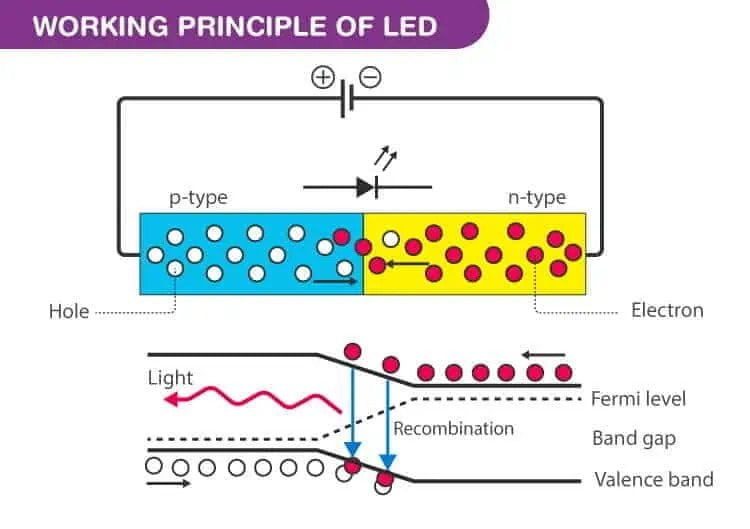
LED Varieties
LEDs, or Light Emitting Diodes, come in a multitude of types, including:
1. Standard LEDs
I have often referred to as traditional or through-hole LEDs; Standard LEDs are the most prevalent and frequently utilized form of light-emitting diodes. These LEDs are fabricated from a small chip of semi conductive materials encased in a transparent epoxy resin package featuring two metal pins. These leads are linearly aligned, facilitating a swift, straightforward mounting process on a printed circuit board.
Standard LEDs produce light once an electrical current is applied to the chip within the epoxy resin package. The emitted light’s color is determined by the chip’s material composition. For instance, Gallium Arsenide (GaAs) LEDs produce red light, while those made from Gallium Nitride (GaN) give off blue and green light.
One of the primary benefits of standard LEDs lies in their robustness and extended lifespan. They have the potential to function for tens of thousands of hours, far outlasting traditional incandescent bulbs. Moreover, they are notably energy-efficient, consuming up to 90% less energy than their incandescent counterparts and emitting minimal heat, making them suitable for applications where heat generation could be problematic.
Standard LEDs find usage in various applications, encompassing lighting displays, vehicle illumination, electronic devices, and household appliances. They are also found in traffic signals and digital time displays, among other applications that necessitate a dependable and energy-efficient light source.
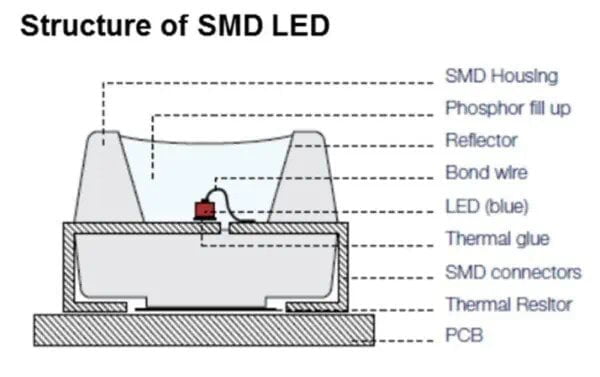
2. Exploring High-Power LEDs
High-Power LEDs stand out among light-emitting diodes with their ability to yield substantial light output while maintaining energy efficiency. They are perfect for various applications, such as lighting, vehicles, signage, and electronics.
Distinct from standard LEDs in design and build, high-power LEDs integrate multiple LED chips on a single substrate, enhancing their brightness and output. They also employ a larger heat sink to effectively dissipate heat generated from high output, thus preventing potential LED damage due to excess heat.
A significant advantage of high-power LEDs is their efficiency – they emit an impressive amount of light per unit of energy consumed, making them the preferred option for energy-saving lighting. Their durability and extended lifespan minimize the need for constant replacements and maintenance.
Available in various colors and color temperatures, high-power LEDs are adaptable to different applications, including general, task, and specialty lighting, such as grow lights for indoor plants, aquarium lighting, and stage lighting.
3. Organic LEDs (OLEDs)
Organic LEDs (OLEDs) leverage organic compounds to generate light, marking a departure from traditional LEDs. While both emit light upon applying electrical current, the materials used set them apart.
While conventional LEDs utilize inorganic substances like semiconductors and metal alloys, OLEDs employ organic compounds like polymers and small molecules. These are thinly layered on a substrate and light up upon applying an electrical charge.
The advantages of OLEDs include their thinness and flexibility, making them suitable for many applications, from smartphones and televisions to lighting fixtures and signage. OLEDs’ energy efficiency ensures less power consumption compared to traditional lighting technologies.
OLEDs can produce bright, high-quality colors as they emit light directly from organic materials, giving them a wider color range and better contrast than traditional LEDs that rely on filters for color production. This characteristic makes OLEDs ideal for digital displays and lighting fixtures where color accuracy matters.
4. Polymer LEDs (PLEDs)
Polymer Light-Emitting Diodes (PLEDs) use an active layer made from a conductive polymer material, making them perfect for light-emitting devices due to their unique optical and electronic properties. PLEDs differ from traditional LEDs, which use inorganic materials like gallium nitride and silicone.
PLEDs rely on an electric field to stimulate the polymer material’s electrons, causing light emission. The light’s color can be adjusted by modifying the polymer material’s chemical composition.
PLEDs can be fabricated using cost-effective, roll-to-roll processing techniques, ensuring scalability and cost efficiency. They are commonly used in lighting, displays, and electronic devices. Their flexibility makes them excellent for wearable electronics like smart clothing and skin-mounted sensors.
5. Quantum Dot LEDs (QD-LEDs)
Quantum Dot LEDs (QD-LEDs) use nanocrystals (quantum dots) to produce light. In a QD-LED, quantum dots, typically semiconductor materials, are layered between two electrodes. An electric current excites the electrons within the dots to emit light. The quantum dot size determines the light color – smaller dots yield blue light, larger ones give red light, and intermediate sizes produce green and yellow light.
QD-LEDs stand out with their ability to generate a wider color range with high accuracy and efficiency, courtesy of the precise control over quantum dot size for fine-tuning the emitted light. They are also more environmentally friendly, with a longer lifespan and lesser energy consumption.
However, QD-LEDs, a new technology, are not widely available. There are concerns regarding the potential toxicity of the semiconductor materials, typically cadmium or heavy metals, used in making quantum dots. Research is ongoing to develop safer and more eco-friendly materials for these devices.
6. Ultraviolet LEDs (UV-LEDs)
Ultraviolet LEDs (UV-LEDs) emit ultraviolet (U.V.) light, invisible to human eyes. UV-LEDs generate light in the ultraviolet spectrum, typically between 280 and 400 nanometers (nm), subdivided into three categories:
- UV-A (315–400 nm)
- UV-B (280–315 nm)
- UV-C (100–280 nm)
UV-LEDs are beneficial in several applications, such as curing, sterilization, and water purification. Common uses include curing adhesives and coatings in electronics manufacturing inks and coatings in the printing, automotive, and aerospace industries. They are also efficient in sterilizing equipment and surfaces in the medical sector.
However, U.V. light, including that from UV-LEDs, can pose health hazards. Prolonged exposure can cause eye damage and skin cancer. Proper protective gear and adherence to the manufacturer’s safety guidelines are paramount when working with UV-LEDs.
What Constitutes the Creation of LEDs?
Creating LEDs is a complex endeavor, consisting of several steps such as wafer preparation, etching, encapsulation, and incorporating various packaging technologies. We will delve deeper into these procedures, but first, let’s identify the essential materials contributing to this process.
Essential Components in LED Production
The role of materials in LED production is indispensable as they dictate the LED’s performance and characteristics. Here’s an enlightening exploration of the various materials utilized in the manufacturing of LEDs:
- Gallium Nitride (GaN) is prevalently used in the creation of LEDs. A potent semiconductor, GaN, can emit blue and green light and is pivotal to producing white LEDs. It also serves as a foundational material in LED manufacturing.
- Indium Gallium Nitride (InGaN) is a trinary semiconductor. It is used to create blue, green, and white LEDs and to manufacture laser diodes.
- Aluminum Gallium Indium Phosphide (AlGaInP) is a quartile semiconductor. It’s employed in producing red, orange, and yellow LEDs. High-brightness LED applications, such as automotive and traffic lighting, also use AlGaInP.
- Sapphire is a favored base material in LED manufacturing. As a high-quality, single-crystal material, it provides a stable platform for the growth of GaN crystals.
- Silicon Carbide (SiC) is a broad-bandgap semiconductor material utilized in high-power LED, power electronics, and high-temperature applications.
- Phosphors are unique materials that transform blue or U.V. light from LEDs into various colors. They are predominantly used in the creation of white LEDs.
- Copper is often employed as a heat sink material in LED production due to its superior heat conduction abilities, which help dissipate the LED’s heat.
- Gold is utilized as a wire-bonding material in LED manufacturing due to its excellent conductivity and resistance to corrosion.
Process of LED Fabrication
The fabrication of LED typically involves these key stages:
First Phase: Preparation of the Wafer
The initial phase in LED fabrication entails preparing the base material by meticulously cleaning and polishing it. Subsequently, the substrate gets a coating of a thin material known as a buffer layer, which assists in minimizing defects and enhancing the LED’s overall quality.
Second Phase: Epitaxy
The following phase is epitaxy. It involves the growth of a layer of semiconductor material atop the substrate. This process usually employs Metal Organic Chemical Vapor Deposition (MOCVD), where a gas mixture containing the semiconductor material is heated and deposited onto the substrate. The thickness of the epitaxial layer dictates the wavelength of light the LED will emit.
Third Phase: Doping
Post the growth of the epitaxial layer, it is doped with impurities to establish P-type and N-type areas. This is typically executed using an ion implantation procedure. In this process, ions of the impurities are implanted into the semiconductor material using high-energy beams.
Fourth Phase: Contact Creation
Upon doping, the LED receives a layer of metal coating to create electrical contacts. The metal is typically deposited onto the LED using sputtering, where a high-energy ion beam deposits the metal onto the LED.
Fifth Phase: Etching
During this phase, photolithography creates patterns on the LED surface. A photoresist layer is deposited onto the LED, and a pattern is etched into the photoresist using ultraviolet light. This pattern is transferred onto the LED surface through dry etching, where plasma is used to etch away the semiconductor material.
Sixth Phase: Encapsulation
The penultimate phase in LED fabrication is encapsulation. Here, the LED gets encased in a package designed to shield it from external environmental factors and facilitate heat dissipation. Typically, the package is made from epoxy, which is poured over the LED and cured to form a sturdy, protective shell. The package also integrates electrical contacts that connect the LED to a power supply.
Final Phase: Testing
Lastly, the encapsulated LEDs undergo testing to ensure they fulfill the required brightness, color, and efficiency standards. Any defective devices are discarded at this stage, with the remaining devices packaged for customer shipment.
Contrasting LEDs and Conventional Lighting Options
LEDs offer enhanced efficiency and lower energy consumption compared to their conventional counterparts. Their lifespan outlasts traditional bulbs, providing up to 50,000 hours of usage while generating less heat. LEDs come in a broad spectrum of colors and shapes, delivering superior quality light despite their compact size. They are also more eco-friendly as they do not contain harmful materials.
Conventional lighting, however, tends to be less energy-efficient and generates more heat. These light sources offer a lifespan of around 10,000 hours and are restricted to a limited color range. Traditional bulbs are usually larger and come in fewer shapes, plus they often contain substances harmful to the environment.
LEDs provide instant illumination and are low maintenance. They can easily be adjusted with compatible electronic controls, although their initial cost might be higher. In contrast, traditional bulbs have a lower upfront cost but result in higher operational expenses over time, demanding more maintenance and offering limited dimmability.
To learn more, please refer to our article on the Pros and Cons of LED Lighting.
| Feature | LEDs | Traditional Light Sources |
| Energy Efficiency | Highly Efficient; consumes less energy | Less efficient; consumes more energy |
| Lifespan | Longer lifespan, up to 50,000 hours | Shorter lifespan; up to 10,000 hours |
| Heat Generation | Low heat generation | High heat generation |
| Light Quality | High-quality light, available in many colors | A limited range of colors is available |
| Size and Shape | Small and compact, available in various shapes | Bulky and limited shape options |
| Environmental Impact | Environmentally friendly, no toxic materials | Contain toxic substances |
| Instant On/Off | Instant On/Off | Slow to warm up and turn off |
| Cost | Higher initial cost, but cheaper in the long run | Lower initial cost, but the higher operating cost |
| Maintenance | Low maintenance required | High maintenance required |
| Compatibility | Compatible with electronic controls | Limited compatibility with electronic controls |
| Dimming | Dimmable with compatible controls | Limited dimming capability |
Deciphering LED Performance
Comprehending the performance of LEDs can be intricate due to the numerous technical specifications, influencing factors, and testing procedures involved. We will delve into essential LED specifications, elements impacting their performance, and the testing and certification of LEDs.
LED Specifications
Below are the details of the LED specifications:
Luminous Flux:
The luminous flux indicates the amount of visible light emitted by an LED source, measured in lumens (lm). A higher lumen value corresponds to a brighter LED. However, the luminous flux value alone does not provide information about the quality of emitted light. Factors such as color rendering and energy efficiency should also be considered.
Luminous Efficacy:
The luminous efficacy measures the amount of visible light an LED source produces about its power consumption. It is measured in lumens per watt (lm/W). A higher luminous efficacy value indicates that the LED is more efficient, generating more light per power unit. LEDs with higher luminous efficacy can help save energy and reduce operating costs.
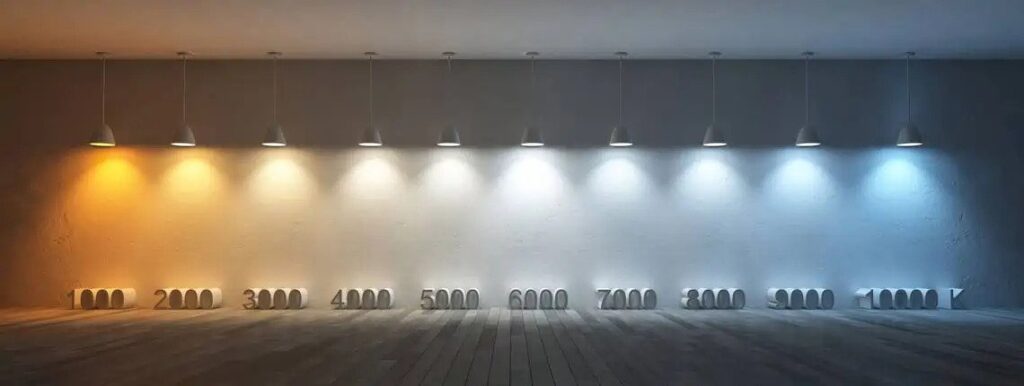
Color Temperature:
The color temperature indicates the appearance of the light emitted by an LED source in terms of color. It is measured in Kelvin (K). LEDs can emit light at various color temperatures, ranging from warm white (2700K–3000K) to cool white (5000K–6500K). Lower color temperature values indicate warmer (yellowish) light, while higher values indicate cooler (bluish) light.
Color Rendering Index (CRI):
The color rendering index (CRI) measures how accurately an LED source renders colors compared to natural light. The CRI value ranges from 0 to 100, with a higher value indicating better color rendering. LEDs with a CRI value of 80 or higher generally exhibit good color rendering, while those with a CRI value below 80 may result in color distortions.
Forward Voltage:
The forward voltage is the voltage required to activate an LED and make it emit light. It is measured in volts (V). The forward voltage of an LED depends on its type and manufacturing process.
Reverse Current Leakage:
Reverse current leakage refers to the current that flows through an LED in the opposite direction when a voltage is applied in reverse. It is important to minimize reverse current leakage to ensure proper operation and prolong the LED’s lifespan.
Factors Influencing LED Performance
LEDs, also known as Light Emitting Diodes, have gained immense popularity due to their high efficiency, long lifespan, and low energy consumption. Nevertheless, several factors can impact the performance of LEDs. These include:
-
Thermal Management
Efficient heat management is crucial for optimal LED performance. LEDs are sensitive to temperature, and inadequate cooling can lead to degradation, reducing efficiency and lifespan. Therefore, it is essential to implement proper thermal management techniques to maintain the performance of LEDs.
-
Drive Current
The drive current is another critical factor affecting LED performance. LEDs require specific current levels to operate effectively. Overdriving LEDs can decrease lifespan, reduce efficiency, and cause failure. Conversely, under-driving can result in diminished light output and a shorter lifespan. Therefore, maintaining the correct drive current is crucial for ensuring optimal LED performance.
-
Aging
Like other electronic devices, LEDs undergo aging, affecting their performance over time. As LEDs age, their efficiency diminishes, and their light output decreases. This decline, known as lumen depreciation, can be accelerated by exposure to heat, humidity, and environmental conditions. Hence, it is important to consider LEDs’ expected lifespan and degradation rate when designing lighting systems.
-
Color Shift
Color shifts can impact LED performance over time. Changes in the phosphor material of LEDs can cause undesirable alterations in color within the lighting system. This shift can make the lighting less appealing or unsuitable for its intended purpose.
-
Optics
The selection of optics in an LED lighting system significantly influences its performance. Appropriate optics ensure even light distribution, maximizing LED efficiency. Conversely, poor optics can lead to light loss or scattering, reducing the system’s overall efficiency.
LED Testing and Certification
Certification plays a vital role in ensuring LED products’ quality, safety, and performance standards. Independent third-party organizations specializing in testing and certification conduct these assessments. Some notable certifications include:
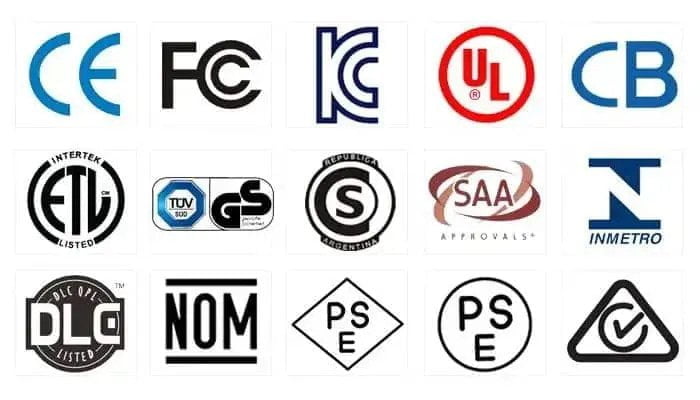
1. IESNA LM-80
IESNA LM-80 is a standard that measures lumen depreciation and performance of LED products over time under various operating conditions. This standard ensures that LED products maintain their quality and brightness throughout an extended period of use.
2. ENERGY STAR
ENERGY STAR is a program that certifies LED products based on energy efficiency and performance standards. Products that receive ENERGY STAR certification are typically more energy-efficient than non-certified alternatives, helping consumers save on energy bills. ENERGY STAR certification also signifies high standards of performance and quality.
3. Other Certifications
Apart from ENERGY STAR, other certifications exist for LED products. These include DLC (Design Lights Consortium) and U.L. (Underwriters Laboratories). DLC certification focuses on energy efficiency and is often required for LED products to qualify for utility rebates. U.L. certification indicates that an LED product has undergone testing and meets safety standards.
Applications of LEDs
LEDs are widely utilized in various applications, addressing different needs and providing numerous benefits. Some of the common applications of LEDs include:
Lighting and Illumination:
LEDs are extensively used for lighting in residential, commercial, and outdoor settings. They are energy-efficient and long-lasting, making them ideal for reducing energy consumption and saving money on electricity bills. LEDs are employed in recessed, track, and under-cabinet lighting for residential purposes. In commercial spaces like offices, retail stores, and warehouses, LEDs offer bright and consistent lighting, enhancing productivity and creating a welcoming environment for customers. In outdoor lighting applications such as streetlights, parking lot lights, and landscape lighting, LEDs are durable and energy-efficient, withstanding extreme weather conditions.
Display Technology:
LEDs are crucial in display technology, offering superior performance and visual appeal. LED-based displays are preferred in digital signage applications because they produce high-contrast, high-resolution images with vibrant colors. They remain visible even in bright sunlight, making them suitable for outdoor advertising. LED technology is also used in television sets, providing improved picture quality, contrast, and energy efficiency compared to traditional LCD TVs. Additionally, LEDs are used in computer monitors, laptops, and mobile devices, offering thinner, lighter, and more power-efficient displays, which is particularly beneficial for portable devices. In the entertainment industry, LEDs are utilized in large-scale displays such as walls, floors, and ceilings, creating immersive visual experiences with customizable colors and patterns.
Automotive Industry:
LEDs find extensive applications in the automotive industry, primarily for lighting purposes. They are used in headlights, taillights, brake lights, turn signals, and interior lighting. LED lighting offers clear visibility, energy efficiency, and customization options. LEDs are also employed in safety features, including daytime running lights, adaptive headlights that adjust based on vehicle speed and steering angle, and backup cameras that provide bright and clear images in low-light conditions. Moreover, LEDs contribute to the exterior styling of vehicles by enhancing accent lighting, illuminating logos, and enabling dynamic lighting effects like sequential turn signals and animated displays.
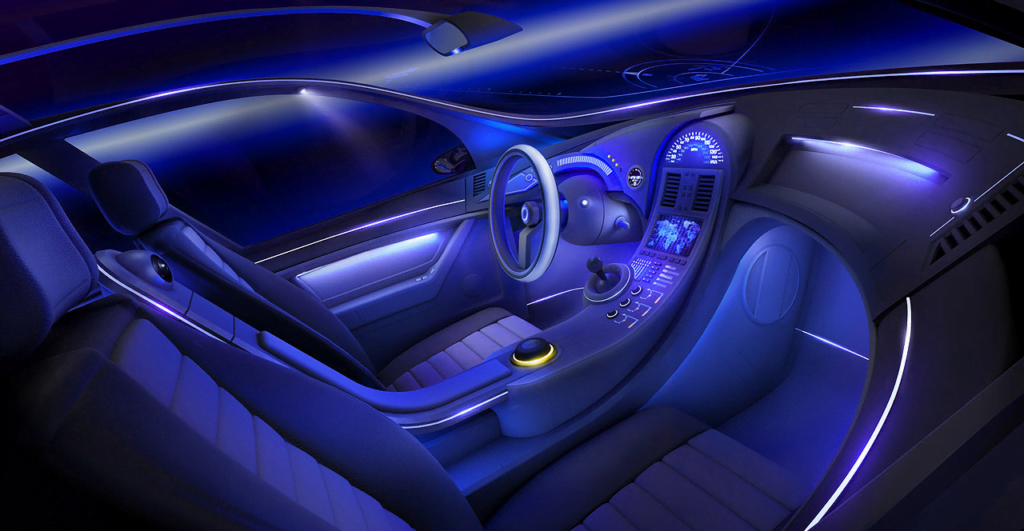
Medical Equipment:
LEDs are integrated into various medical equipment, providing enhanced illumination and accurate imaging capabilities. In medical imaging devices such as X-ray machines, C.T. scanners, and MRI machines, LEDs are light sources for illuminating the body part being imaged, resulting in brighter and more accurate images, especially for low-contrast situations. LEDs are also used in endoscopes for minimally invasive surgeries, where the bright LED lights enable surgeons to visualize the surgical site clearly, enhancing precision and accuracy. Surgical headlights with LEDs offer advantages such as longer lifespan, lower heat generation, and accurate color rendering, benefiting surgical procedures. In phototherapy devices, LEDs emit blue light to combat acne-causing bacteria and red light to reduce inflammation and promote wound healing. LEDs are also employed in dental equipment like curing lights, facilitating the quick hardening of dental fillings.
Communication and Signaling:
LEDs are extensively used in communication and signaling applications due to their energy efficiency, visibility, and rapid color-changing capabilities. LED-based systems offer improved energy efficiency, longer lifespan, and enhanced visibility in traffic lights, even in bright sunlight. Emergency vehicles such as police cars, fire trucks, and ambulances rely on bright LED lights for clear signaling over long distances during emergencies. Aviation and marine signaling systems utilize LED runway and navigation lights, which are more durable, energy-efficient, and offer directional signaling capabilities. In telecommunications, LEDs serve as light sources in fiber optic communication systems, providing higher efficiency and bandwidth than traditional copper-based systems.
These are just a few examples of the extensive range of applications where LEDs are used, showcasing their versatility, energy efficiency, durability, and visual performance in diverse industries and sectors.
LED Maintenance Guidelines
Proper maintenance is crucial for ensuring LEDs’ optimal performance and longevity, just like any other electrical device. Here are some guidelines to follow for effectively maintaining LEDs:
Cleaning LEDs
- Choose the Right Cleaning Solutions: It is important to steer clear of harsh chemicals, such as solvents, as they can harm the delicate structure of LEDs. Instead, opt for a mild detergent or isopropyl alcohol solution. Ensure that the cleaning solution does not contain abrasive particles.
- Use the Right Tools: When cleaning LEDs, utilize a soft, lint-free cloth such as microfiber or a lens cleaning cloth. Avoid rough or abrasive materials like paper towels, which can scratch the LED surface.
- Handle with Care: Approach LED cleaning gently and avoid exerting excessive pressure on the LED surface. Additionally, refrain from touching the LED with bare fingers, as the oils and contaminants from your skin can diminish its brightness and lifespan.
Handling LEDs
Proper handling techniques are essential for preserving the longevity of LEDs. Consider the following tips:
- Please avoid Direct Contact: When handling LEDs, it is crucial to refrain from touching the LED surface with your bare hands. The natural oils and dirt present on your hands can cause damage. Instead, wear gloves or use a clean, lint-free cloth to handle LEDs.
- Prevent Moisture Exposure: Moisture can be detrimental to LEDs, so avoiding exposure to moisture during handling is vital.
- Minimize Heat Exposure: LEDs are sensitive to high temperatures, and prolonged exposure can lead to damage. Hence, it is essential to prevent LEDs from coming into contact with excessive heat during handling.
- Store Correctly: To safeguard LEDs from heat and moisture, ensure they are stored in a cool and dry place.
By adhering to these maintenance guidelines, you can maximize the performance and lifespan of your LEDs.
Common Issues with LED Lighting and How to Solve Them
LED lighting, like any other technology, can encounter several problems. In this article, we will explore some of the most common issues associated with LED lighting and provide solutions to address them effectively.
LED lights may flicker, especially upon initial use, which can be annoying and distracting. This problem has several potential causes, including an incompatible dimmer switch, a faulty driver, an inadequate power supply, or improper installation.
To resolve this issue, ensure the dimmer switch is compatible with LED lights. Replace any faulty components and ensure proper installation of the lighting fixture.
-
Glare
Glare produced by LED lights can be uncomfortable and strain the eyes. Several factors can contribute to this problem, such as the placement of the light fixture, the type of bulb used, and the overall design.
To mitigate glare, consider using frosted or diffused lenses to reduce the intensity of the light. Adjust the placement of the light fixture to minimize direct exposure to the eyes. Additionally, opt for bulbs with lower brightness levels.
-
Incorrect Color Temperature
LED lights can emit light with different color temperatures, influencing the environment and ambiance of a room. For instance, some LEDs may produce a harsh, bluish-white light that feels unwelcoming, while using warm-colored lights in an office setting may cause drowsiness.
To address this issue, select LED lights with a color temperature that aligns with the desired ambiance of the room. For example, a warm, yellowish light may suit a bedroom, whereas a cooler, bluish-white light might be more appropriate for a workspace or study area.
-
Heat Generation
LED lights can generate heat, potentially impacting their performance and lifespan. Several factors contribute to excessive heat, including inadequate cooling or ventilation, high ambient temperature, and excessive current flow.
To mitigate heat-related problems, ensure that LED lights are properly cooled and ventilated. Avoid installing them in areas with high ambient temperatures and ensure that the current flow remains within the recommended range.
-
Compatibility Issues
Compatibility problems can arise when LED lights are incompatible with existing lighting fixtures or systems, posing challenges during installation and use. These issues may stem from differences in voltage, wattage, or design.
To resolve compatibility problems, verify that the LED lights are compatible with the existing lighting systems and fixtures. If necessary, consider replacing the fixtures and systems to ensure compatibility.
By understanding these common issues and implementing the appropriate solutions, you can enjoy the numerous benefits of LED lighting without any inconvenience.
Future Directions in LED Innovation
Let’s dive into the future advancements in LED technology.
Boosting Energy Efficiency
Here’s a snapshot of how energy efficiency is set to improve in LED technology’s future iterations:
1. Increasing Efficacy
LED efficacy gauges the ability of a light source to convert electricity into light. Continuous material science and device design improvements have improved LED efficacy over time. Innovations such as developing new semiconductor materials like Indium Gallium Nitride (InGaN) have created more efficient blue and green LEDs, vital components in white LEDs. Anticipate more such advances leading to highly efficient LEDs in the future.
2. Enhanced Thermal Management
As LEDs’ efficiency increases, they produce more heat, potentially degrading their performance and lifespan. However, with progress in thermal management techniques like better heat sinks and high-thermal-conductivity materials, the reliability of LEDs is greatly improved. These enhancements will further boost the performance of LED manufacturers’ products, strengthening their credibility.
3. Intelligent Control Systems
Advanced control systems complement LED technology, maximizing energy use and minimizing waste. For instance, LEDs with sensors can automatically adjust lighting levels based on occupancy and natural light levels. More automated sensing features are expected in future LEDs.
4. Integration with Complementary Technologies
LEDs are increasingly integrated with other technologies like Internet of Things (IoT) sensors. This amalgamation creates smart lighting systems that adapt to fluctuating environments and user needs, allowing for even more energy savings through precise and efficient control of lighting systems.
Progress in Manufacturing Techniques
Let’s explore the progress in manufacturing techniques shaping the future of LED technology:
1. Chip Scale Package (CSP) LEDs
CSP LEDs are a cutting-edge LED variant that eliminates the requirement for conventional packaging materials, thus reducing their size and weight. This advancement makes them suitable for compact devices. CSP LEDs are more efficient as they shorten the current’s path, minimizing energy loss. The manufacturing of CSP LEDs requires specific equipment that is becoming increasingly accessible.
2. Micro-LEDs
Driven by the invention of new colloidal synthesis techniques and the integration of Q.D.s into LED manufacturing, Micro-LEDs are less than 100 micrometers in size, offering higher resolution, vibrant colors, and superior contrast than standard LEDs. Micro-LED production poses challenges due to its minuscule size, but technological advancements facilitate its mass production.
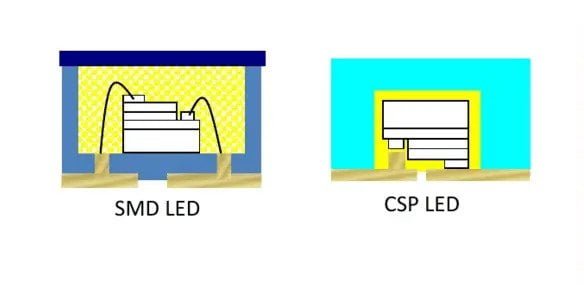
3. Quantum Dots (Q.D.s)
Q.D.s are semiconductor nanocrystals that illuminate when exposed to a light source. They provide superior color accuracy and brightness to traditional LEDs and can be customized to emit specific colors. The manufacturing of Q.D.s involves “colloidal synthesis,” where nanocrystals are suspended in a liquid and then deposited onto a substrate to create the LED.
4. 3D Printing
3D printing is a revolutionary manufacturing method that allows for the creation of objects layer by layer. This technique provides the flexibility to create intricate shapes, custom LED forms, and housing, reducing the need for traditional manufacturing techniques. It is also more eco-friendly as it reduces waste and transportation needs.
The Emergence of Fully Organic LEDs
Fully organic LEDs (FOLEDs) are OLEDs void of any inorganic materials, like metals, commonly found in conventional LED technology. FOLEDs hold several benefits over traditional LEDs – they are flexible, lightweight, and less energy-consuming. Plus, they can be made with inexpensive, environmentally friendly materials, making them a good choice for sustainable technologies.
FOLEDs offer an array of potential applications, spanning lighting, displays, and even wearable technology. In the lighting sector, FOLEDs can potentially replace conventional light sources like fluorescent and incandescent bulbs due to their
Final Thoughts
The evolution of LED technology continues, with advancements in performance, color quality, and cost-effectiveness being made regularly. This constant drive for enhancement is the product of dedicated scientists and engineers striving for higher LED efficacy.
Understanding the fundamental aspects of LED technology is invaluable, whether you are a consumer or business owner. Such knowledge can guide you toward making informed decisions when buying lighting products. Familiarity with terms like color temperature, lumens, wattage, and CRI can streamline your search for the perfect LED lighting solution.
LEDs represent an intriguing and enduring technology. With their inherent energy efficiency, robustness, and adaptability, there is no doubt that the future of lighting is LED.
MyLikeLed is a leading producer of superior LED strips and LED neon flex. Our products are tested rigorously in state-of-the-art laboratories to ensure they meet the highest quality standards. Furthermore, we offer personalized options on our LED strips and neon flex. If you’re looking for top-tier LED strips and LED neon flex, don’t hesitate to contact MyLikeLed!
FAQs
What are the main benefits of using LEDs?
The main benefits of using LEDs are energy efficiency, long lifespan, durability, and low heat emission. Compared to traditional bulbs, LEDs use less power and can last for tens of thousands of hours.
Are LEDs more energy-efficient than traditional lighting?
Yes, LEDs are significantly more energy-efficient than traditional incandescent or fluorescent bulbs. They use up to 80% less energy while providing the same or better brightness levels.
Can LEDs be used for all types of lighting?
Yes, LEDs can be used for nearly all types of lighting, including residential, commercial, industrial, and outdoor applications. They come in a wide range of colors, shapes, and intensities to fit various lighting needs.
Do LEDs get hot like regular bulbs?
No, LEDs do not get as hot as regular incandescent bulbs. While they do generate some heat, it is minimal and usually managed with built-in heat sinks, making LEDs much safer to use.
How long do LEDs typically last?
LEDs typically last between 25,000 to 50,000 hours or more. Their long lifespan means fewer replacements and reduced maintenance costs over time.

Hi, I’m Xylia Xiong, a sales professional with 14 years of experience in the LED strip light industry. I specialize in providing tailored solutions, leveraging my expertise in LED products and the latest industry trends. Known for effective communication and problem-solving, I’m dedicated to helping lighting manufacturers, importers, and distributors achieve their goals.
Let’s work together to create customized solutions that exceed expectations.
Related Posts

The Best LED Strip Lights You Can Buy Right Now

Comparing WS2811 Vs WS2812B: Key Differences


